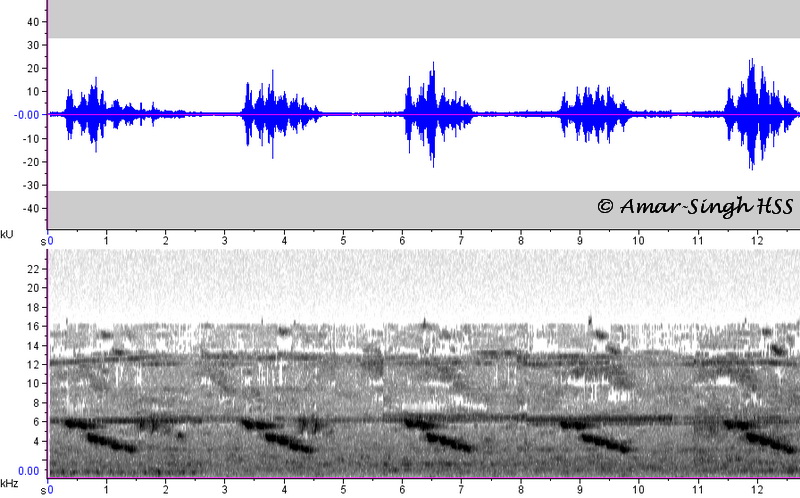![FlycatcherTiBl [AmarSingh]](https://besgroup.org/wp-content/uploads/FlycatcherTiBl-AmarSingh-1.jpg)
“Spotted a Tickell’s Blue Flycatcher (Cyornis tickelliae sumatrensis) female with nesting material today (above, below).
![FlycatcherTiBl [AmarSingh]](https://besgroup.org/wp-content/uploads/FlycatcherTiBl-AmarSingh.jpg)
“Images were limited by fairly dense canopy but still a joy to watch.
“I spent 1.5 hours allowing them to slowly adjust to me. The nesting site is in a bamboo clump next to the river. I have yet to approach it as the pair is still nervous.
“At one time the male made calls/song to alert the female of my presence (below).
“All nesting material collection was by the female. I did not observe the male do any collection and it is possible the male played the role of ‘guarding’ the site. Nesting material was mainly moss, root and plant fiber, ferns.
“The calls is an edited record of the ‘classical’ song – as Wells 2007 describes it aptly as ‘a brief, sweet song of 4-7 tinkling, metallic notes, starting with a high seee then dropping steeply down, with a brief upward step either midway through the cadence or at its end, or see-sawing down…’

“Above is the waveform and sonogram.”
Dato’ Dr Amar-Singh HSS
Ipoh, Perak, Malaysia
16th April 2016
Location: Kledang-Sayong Forest Reserve, Ipoh, Perak, Malaysia
Habitat: Primary jungle next to rushing stream









One Response
Nice information TFS
i want to know where is placed nest, means in tree hole or cup shaped hanging on twig like other flycatchers do?